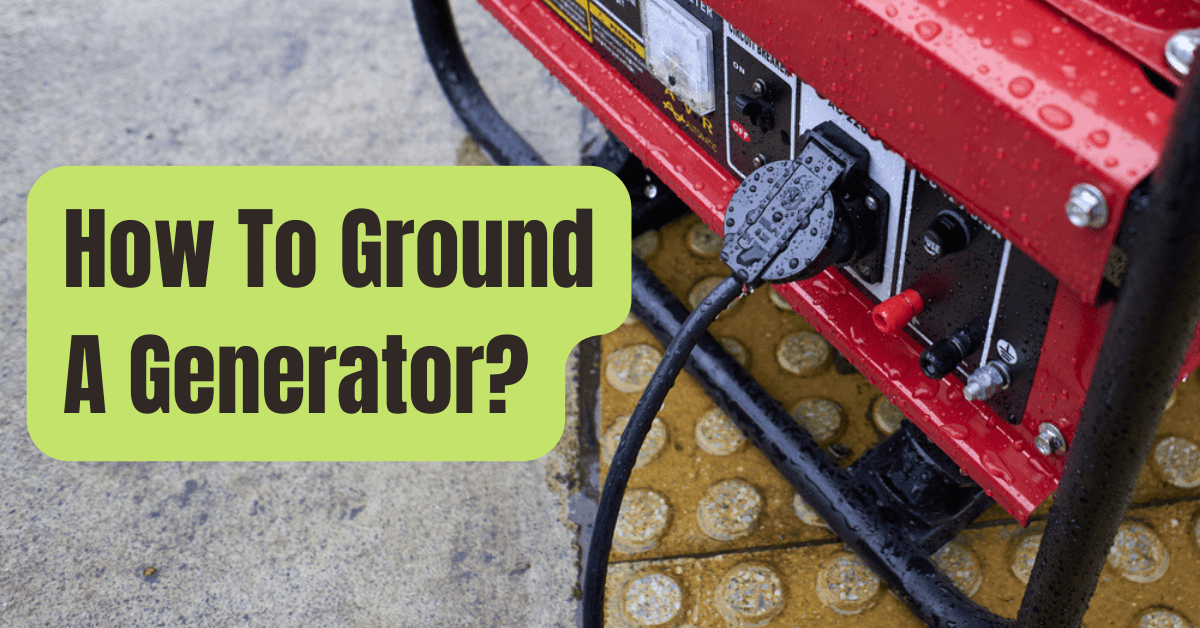Portable generators provide you with the convenience of having energy on the move.
That means you can bring home comforts with you when you go camping, light up outdoor events, use power tools at a distant job, and more.
While portable generators are reasonably safe in comparison to other motorized instruments, there are still key safety precautions to bear in mind if you wish to ground one.
One of the most crucial is determining whether or not your generator needs to be grounded and learning how to do so.
Not all portable generators must be grounded, and others only need to be grounded under certain conditions.
We’ll go over what grounding is, how to identify whether you need to ground your portable generator, and how to do it properly in this post.
Electrical Grounding: An Overview
When electricity flows through a series of wires, it is always looking for a means to dissipate energy by returning to a ground.
Electricity passes via “hot” wires to a series of neutral wires in a typical electrical system, such as your generator’s.
However, if the regular electrical circuit is disrupted, electricity will flow along the route of least resistance.
If your generator isn’t grounded, the route of least resistance may enable electricity to go where it shouldn’t, resulting in electrocution, fire, or other hazardous scenarios.
Grounding provides a low-resistance backup channel for electricity to flow.
The word “grounding” is employed because the backup line in many electrical systems runs straight into the ground, where it poses less danger.
Is It Necessary to Ground a Portable Generator?
In order to be safe, all portable generators must be grounded.
However, whether or not you need to ground your generator depends on how it was built.
The metal frame that surrounds most contemporary portable generators is engineered to be the route of least electrical resistance.
The engine, fuel tank, and generator housing are all linked to the frame in this example, ensuring that any electricity running through the generator outside of the wire is grounded.
Checking your owner’s handbook is the quickest approach to see whether your generator has to be grounded.
If your generator has to be grounded, the manufacturer should offer very specific instructions.
You may also check the architecture of your generator if you don’t have the instructions or if it isn’t obvious.
If the transfer switch on your generator allows you to transfer current to a neutral ground wire, the components of your generator are an independently derived system.
This necessitates the use of a separate grounding rod for your generator.
What You Need to Know About Grounding Your Portable Generator
If you need to ground your portable generator, you’ll need to connect it to a grounding rod through the transfer switch.

Grounding Tools and Equipment for Your Generator
To ground your generator, you’ll need the following items on hand:
- Copper Grounding Rod – A copper grounding rod is meant to be pushed into the ground and safely dissipate any electrical current. A copper rod of at least four feet in length is required for most portable generators, while a longer rod may make driving it deeper into the ground simpler.
- Copper Grounding Wire – The grounding bolt on your generator will be connected to the grounding rod using copper grounding wire. The length of wire you’ll need is determined by the distance between your generator and the buried rod. Make sure to leave some additional wire on hand in case you need to drive the rod into the ground.
- Wire Strippers, Pliers, and Wrench – The copper grounding wire will be stripped and connected to the grounding rod and your generator’s grounding bolt using these tools.
- Hammer or Mallet – To force the copper grounding wire into the ground, you’ll need a large, blunt item. A shovel or spike, depending on the terrain, may also be useful.

Step 1: The Copper Grounding Rod should be hammered in.
The copper rod should be buried at least 8 feet deep or pounded into the earth (although you can buy a 4 foot rod, but 8 is standard for home installations).
This depth guarantees that any electrical discharge from the grounding rod does not electrocute anyone on the ground.
The rod may be pounded in at an angle of up to 45 degrees if you’re in rocky or challenging terrain.

Step 2: Make A Connection Between The Copper Wire And The Grounding Rod.
Remove around six to twelve inches of insulation from one end of the copper wire using your wire strippers.
Then, using your pliers, wrap this around the top of the grounding rod, making sure it is snugly twisted around the rod.
Step 3: Connect the Generator to the Grounding Rod
Using the other end of the copper wire, connect your generator to the grounding rod.
When you do this, be sure the generator is switched off.
Locate your generator’s grounding bolt and remove the nut slightly.
Wrap the copper wire around the grounding bolt with your pliers after stripping the end one to two inches.
When you’re finished, tighten the nut to keep the wire in place.
Is It Necessary to Ground a Portable Generator?
Most current generators are constructed as a single unit, with the frame acting as a grounding system.
However, if your generator needs an external ground, correctly grounding it is a critical aspect of safe generator operation.
When you have the correct equipment, grounding your portable generator may be quick and easy.
You may now use your generator without fear of electrocution in the case of an electrical failure after it’s been grounded.










